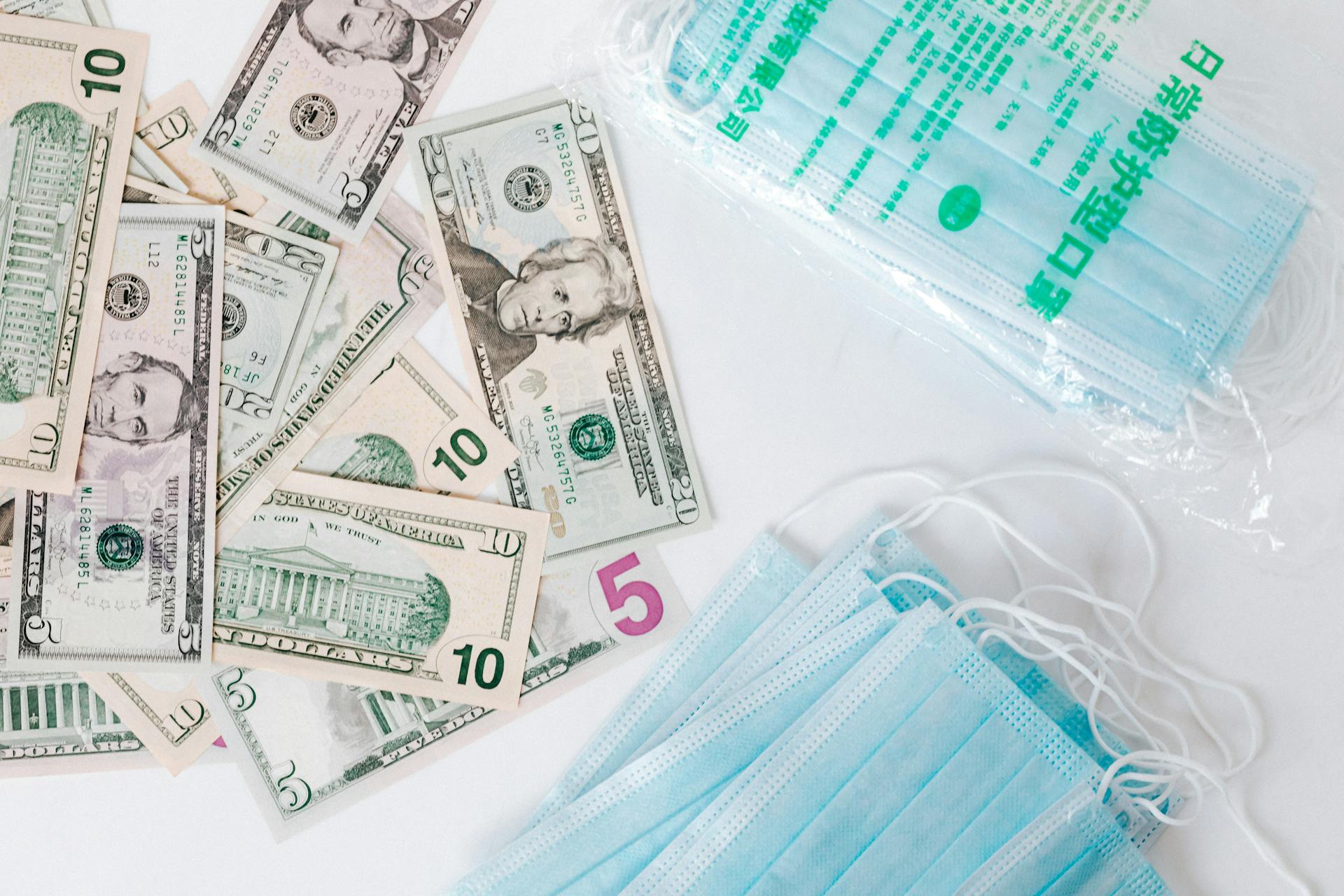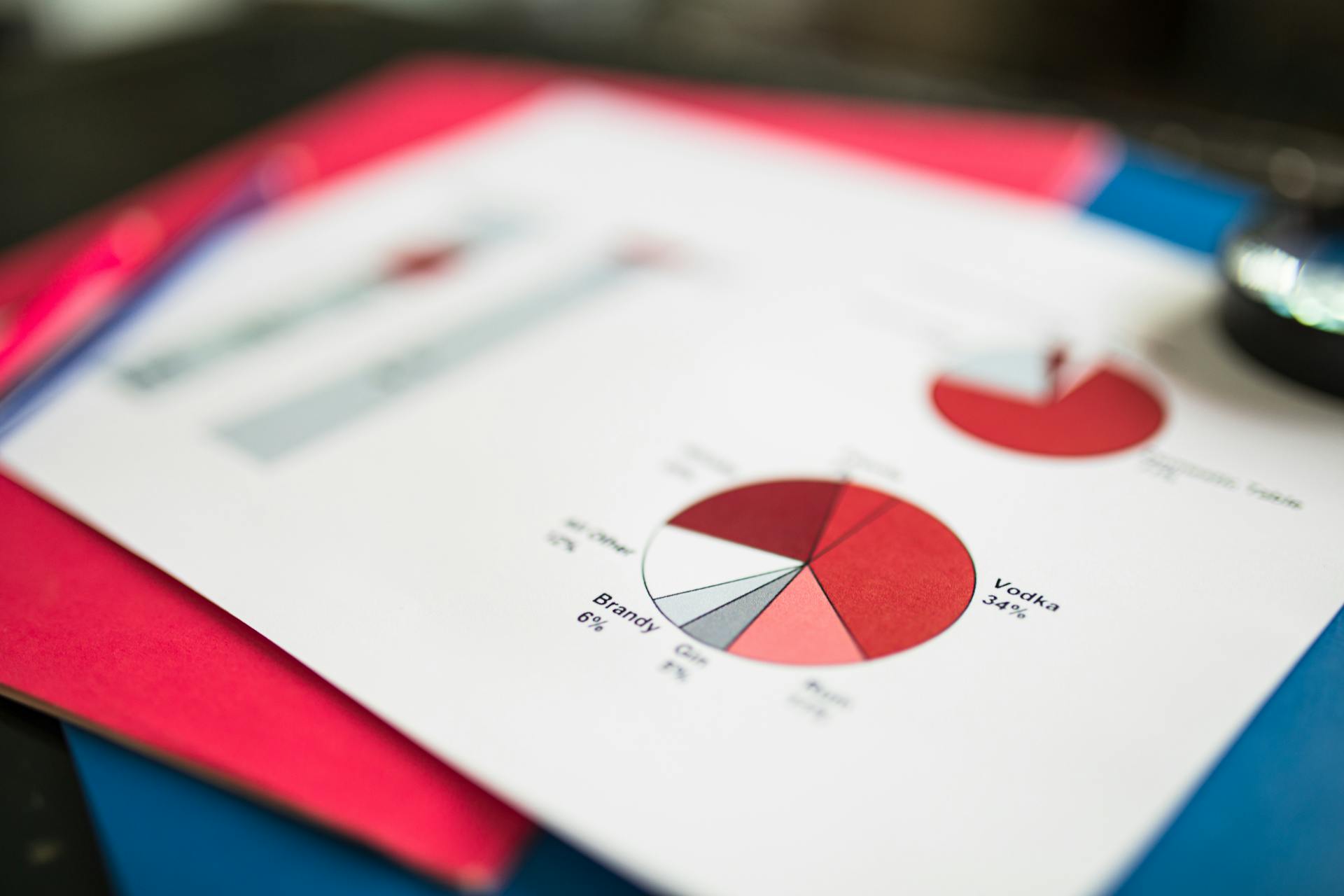
A Navia Flex Spending Account (FSA) is a great way to save money on healthcare expenses. You can set aside a portion of your paycheck before taxes are taken out, and use it to pay for eligible medical expenses.
To enroll in a Navia FSA, you'll typically need to fill out a form through your employer's benefits portal. You can usually find the enrollment form on your company's intranet or through their HR department.
Navia FSAs allow you to set aside a certain amount of money each month or year, depending on your plan. This amount is usually determined by your employer and can vary from year to year.
You can use your Navia FSA to pay for a wide range of healthcare expenses, including doctor visits, prescriptions, and medical equipment.
You might like: Flex Spending Account Use It or Lose It
What is Navia Flex Spending Account?
Navia Flex Spending Account is a type of account that allows you to set aside tax-free money for certain medical expenses.
You can use it for eligible medical, dental, or vision expenses not covered by insurance for you, your spouse, and your dependents, including children up to age 26.
Contributions are elected on an annual basis, and you can estimate your annual election using an FSA calculator during open enrollment.
You can't change your annual election amount after the plan start unless you have a qualified change in status.
Here are some key features of Navia Flex Spending Account:
- Funds are available immediately after enrollment.
- Claims can be submitted online or through Navia's mobile application.
- Some Navia plans offer a debit card for fast payment and to avoid claims.
What It Does
With a Navia Flex Spending Account, you can save a significant amount of money on your out-of-pocket healthcare expenses. You can save up to 30% on your expenses when you use your FSA, which is essentially like getting free money.
To estimate how much to contribute to your FSA, use an FSA calculator during open enrollment to determine your annual election amount. This will help you come up with a realistic figure based on your expected expenses for the plan year.
A unique perspective: Can I Use My Flex Spending Account for Gym Membership

Your annual election amount will be evenly deducted from your paycheck pre-tax throughout the plan year, and you can't change it unless you have a qualified change in status. This means you'll have a steady, predictable amount set aside for healthcare expenses.
You'll have access to your FSA funds immediately after enrollment, and you can submit claims online or through the Navia mobile app. Some Navia plans even offer a debit card, which is the fastest way to pay and avoid a claim.
What is an HSA?
You may have heard of Health Savings Accounts (HSAs) as an alternative to traditional health insurance plans. An HSA allows you to set aside tax-free money for medical expenses.
Contributions to an HSA are made with pre-tax dollars, reducing your taxable income. You can use the funds in your HSA to pay for qualified medical expenses, including copays, deductibles, and prescriptions.
Unlike a Flexible Spending Account (FSA), an HSA can carry over unused funds from year to year. This means you can save for future medical expenses without worrying about losing the money.
You might like: Is Flex Spending Account Tax Deductible
Eligibility and Enrollment

To be eligible for a Navia Flex Spending Account, you'll need to experience a qualifying life event, such as marriage or divorce, or have a change in employment status.
During annual open enrollment, you can enroll or re-enroll in an FSA and change your FSA amount for the forthcoming year. You have 60 days to make a change or enroll after the event occurs.
You can make changes through Workday, and Navia Benefit Solutions can help determine if an event qualifies. Events that qualify are defined by the state in the Washington Administrative Code 182-08-199.
Here are some examples of qualifying life events:
- Marriage or domestic partner registration
- Divorce or dissolved partnership
- Birth or adoption
- Change in employment status
- Change in a child’s eligibility
- Loss of other health insurance coverage
- Legal custody or guardianship of a child
- Disability of a child
- Court order that requires a child to be covered
- Medicaid, Medicare, or CHIP coverage changes
Core Qualifying Events for Enrollment Changes
You'll need to experience a qualifying life event to make changes to your FSA or enroll during times other than annual open enrollment. You have 60 days to make the change after the event occurs.
Marriage or domestic partner registration is a qualifying event. It's a big change, but it's a good opportunity to review and adjust your benefits.
Birth or adoption is also a qualifying event. This is a life-changing moment, and your benefits should reflect the new addition to your family.
A change in employment status is a qualifying event. This can be a promotion, a new job, or even a reduction in hours.
You'll need to review the list of qualifying events to see if your situation fits. If you're unsure, contact Navia Benefit Solutions for guidance.
Here are the core qualifying events for enrollment changes:
- Marriage or domestic partner registration
- Divorce or dissolved partnership
- Birth or adoption
- Change in employment status
- Change in a child’s eligibility
- Loss of other health insurance coverage
- Legal custody or guardianship of a child
- Disability of a child
- Court order that requires a child to be covered
- Medicaid, Medicare, or CHIP coverage changes
Dependent
Dependent expenses can be reimbursed from your FSA, even if your family members aren't covered by your employer-sponsored medical, vision, or dental benefits.
Eligible dependents include your children under age 13, as well as other qualified dependents like a dependent parent or disabled spouse.
You can claim reimbursement for daycare expenses that make it possible for you to work, but these expenses must satisfy certain criteria to be eligible for reimbursement from your account.

The Dependent Care FSA allows you to set aside tax-free money for daycare expenses, with a 2024 annual contribution limit of $5,000 per household.
Spouses can each elect participation in the Dependent Care FSA, but their combined elections cannot exceed $5,000, or $2,500 each for married employees who file their income taxes separately.
Unused contributions are forfeited under IRS regulations, so be sure to submit claims for eligible expenses by March 31 of the following year to avoid losing your money.
Using Your Account
You can use your Navia FSA account to pay for a wide variety of medical expenses, from doctor visits to prescriptions.
FSA funds cover eligible expenses, and you can find the list of eligible and ineligible expenses on the Navia website.
You can pay directly using an FSA debit card, which works just like a regular debit card.
The Navia Benefits debit card allows you to swipe for eligible healthcare expenses, and funds come directly out of your FSA.
Curious to learn more? Check out: Cigna Flex Spending Account Eligible Items
You'll need to hang on to your receipts, as some swipes may require verification.
If you incur a medical expense and can't use the FSA debit card, you have several options for submitting a reimbursement claim.
Claims are processed by Navia, and you can submit a claim through your online profile, the MyNavia mobile app, by email, or by mailing a completed claim form.
You have from January 1 through December 31 to use your FSA funds.
If you have unspent funds left in your FSA at the end of the year, you may be able to carry them over into the next year.
To be eligible for the automatic carryover, you must enroll in either the Limited Purpose FSA or FSA for the following year, or have at least $120 left in your FSA balance.
Here's a summary of the carryover rules:
- Unused funds up to $640 will carryover to the next plan year.
- Funds above $640 will be forfeited.
You can also use the Navia Benefits debit card to pay for eligible expenses, such as childcare costs, using your Dependent Care FSA.
Claim Submissions and Reimbursement
You can start submitting claims for health care expenses at any time, even if your FSA account balance is zero, as long as your expenses don't exceed the total amount allocated to your account for the plan year.
For dependent care expenses, you'll need a balance of at least $25 in your account and eligible expenses that match or exceed that amount. If your request exceeds your balance, the remainder will be paid as funds are contributed.
You have until October 31 of each year to claim reimbursement of expenses incurred during the previous plan year, including a 2 1/2-month grace period.
On a similar theme: Can Someone Check My Bank Account Balance with Account Number
Claim Submissions and Reimbursement
You can begin submitting claims for health care expenses regardless of the balance in your FSA account, but be aware that you can only be reimbursed up to the total amount allocated to your account for the plan year.
To submit claims for dependent care expenses, you'll need to have at least $25 in your account balance and eligible expenses. If your request exceeds your balance, the remainder will be paid as funds are contributed.
For your interest: Flex Spending Account Balance

You have until October 31 to claim reimbursement of expenses incurred during the previous plan year, and there is no minimum claim amount required for claims filed after the end of the plan year.
Here are some key details to keep in mind when submitting claims:
- You can submit claims for health care expenses anytime, regardless of your account balance.
- Dependent care expenses require a minimum account balance of $25 and eligible expenses.
- Claims filed after the end of the plan year have no minimum claim amount required.
- You have until October 31 to claim reimbursement of expenses incurred during the previous plan year.
Required Claim Information
To get reimbursed for qualifying out-of-pocket expenses, you'll need to submit a claim form to Navia with the required documentation.
The documentation must show the date of service, cost, and the type of expense you are claiming. This can include bills from providers or Explanation of Benefits statements from your insurance company.
Bills from providers are an acceptable form of documentation, and they can help you get reimbursed for your out-of-pocket expenses.
Explanation of Benefits statements from your insurance company are also acceptable, and they can provide a clear breakdown of your expenses.
Canceled checks and credit or debit card receipts usually are not accepted as forms of documentation.
Eligible Expenses and Funds
You can use your Navia Flex Spending Account (FSA) to pay for eligible health care and dependent care expenses.
You can use the Navia Benefits debit card to pay at the time of purchase or service for both Health Care and Dependent Care FSA expenses.
To request reimbursement for out-of-pocket expenses, you can pay for eligible expenses and then submit claims online or by mail, including supporting documents like receipts.
You must first authorize Navia Benefit Solutions to direct deposit your reimbursements by logging on to naviabenits.com.
Here are some eligible expenses for Health Care FSA:
Remember to check Navia's list of eligible expenses for FSA plans for more information.
Eligible Health Expenses
Eligible Health Expenses are a crucial part of understanding what you can claim for reimbursement. If you've got a medical bill, you're in luck because deductibles and coinsurance are eligible expenses.
Prescriptions are also covered, which means you can get reimbursed for the medications you need. Over-the-counter medicines like cold or pain meds are also eligible, so don't forget to keep those receipts.
Menstrual products are also covered, which is a great relief for those who need them. Hearing aids and related expenses are eligible too, so if you're struggling with hearing loss, you may be able to get some help.
Dental care and orthodontia are also covered, which means you can get the dental work you need without breaking the bank. Acupuncture is also eligible, so if you're interested in trying alternative therapies, you may be able to get reimbursed.
Vision exams, eyewear, or vision surgery are also eligible expenses, which is great news for those who need glasses or contacts. Here are some examples of eligible health expenses:
- Deductibles and coinsurance
- Prescriptions
- Over-the-counter medicines (e.g., cold or pain meds)
- Menstrual products
- Hearing aids and related expenses
- Dental care and orthodontia
- Acupuncture
- Vision exams, eyewear, or vision surgery
Eligible Expenses
Eligible Expenses are a crucial part of understanding how to make the most of your funds. Eligible Health Care Expenses include deductibles and coinsurance, prescriptions, over-the-counter medicines, and more.
Some examples of eligible expenses include hearing aids and related expenses, dental care and orthodontia, and acupuncture. These expenses can add up quickly, but with the right funds, you can cover them.
You can also use your Dependent Care (Daycare) Flexible Spending Account to pay for daycare expenses that make it possible for you to work. Daycare for your children under age 13 or for other qualified dependents can be paid from this account.
Here are some examples of IRS-allowed daycare expenses:
- Nursery school, preschool, or similar programs for children below the level of kindergarten
- Before or after school care of a child in grade K or above
- Summer or overnight camp during working hours (for children under age 13)
- The household employee whose services include the care of a qualifying person
- Application or registration fees, deposits, and fees paid to reserve a spot in a daycare center
You can also use your Health Care Flexible Spending Account to be reimbursed for health care expenses for yourself and your family that are not paid through another source. However, expenses incurred by or for the treatment of a domestic partner or the child of a domestic partner cannot be reimbursed.
Recommended read: Dependent Care Flex Spending Account
Account Management and Deadlines
If you have a Navia Flex Spending Account, it's essential to understand the deadlines and account management rules to avoid forfeiting your funds.
The "Use-It or Lose-It" rule applies to the Healthcare FSA, meaning any unused funds by the end of the plan year are not refundable.
You have a 60 to 90 day run-out period to file claims for medical costs incurred during the plan year and the following grace period.
The Carryover feature allows you to roll over up to $660 from one plan year to the next, but any excess funds would be forfeited.
The Grace Period gives you an extra 2.5 months at the end of the plan year to incur expenses against your FSA balance, but this is an optional feature so check your employer's plan design.
You can only have either a Grace Period or Carryover, not both, in your plan.
To avoid forfeiting your funds, be sure to submit all claims for reimbursement to Navia Benefit Solutions no later than March 31 after the end of the plan year.
Here are the key deadlines to keep in mind:
- Medical FSA: December 31 (end of plan year) or March 15 (end of grace period) to incur eligible health care expenses
- Reimbursement deadline: March 31 after the end of the plan year
- Run-out period: 60 to 90 days after the end of the plan year
If you have any questions about your Navia Flex Spending Account, you can contact Navia's customer service team at 800-669-3539 or [email protected].
Contribution and Payment
With a Navia Flex Spending Account, you have the freedom to contribute and manage your healthcare dollars in a way that suits your needs. You can contribute a minimum of $120 per year, up to a maximum of $2,850.
To make the most of your FSA, you'll want to estimate your expenses for the plan year and enroll in a Medical FSA for that amount within the deadlines. This will ensure that the money deducted from your pay is divided by the number of paychecks you'll receive in the plan year, giving you a steady and predictable income stream.
The Navia Card, MyNavia mobile application, and convenient bill pay and reimbursement tools make it easy to access and manage your healthcare dollars, eliminating account access and payment headaches.
Easy Payment Tools
The Navia Card and the MyNavia mobile application offer easy access to healthcare dollars. They work seamlessly together to eliminate account access and payment headaches.
With convenient bill pay and reimbursement tools, you can manage your healthcare expenses with ease. These tools are designed to make life simpler, not more complicated.
The Navia Card is a versatile payment tool that gives you easy access to healthcare dollars. It's a game-changer for anyone who's struggled with account access and payment headaches in the past.
Readers also liked: What Is Payment Account
Decide Contribution Amount
You can contribute a minimum of $120 per year to a Medical FSA, but the maximum annual amount you can contribute is $2,850.
To determine how much to contribute, estimate your expenses for the plan year.
The money deducted from your pay is divided by the number of paychecks you'll receive in the year, so consider your pay schedule when deciding on a contribution amount.
Enroll in a Medical FSA for the amount you want to contribute within the deadlines to ensure your contributions are deducted correctly.
Frequently Asked Questions
How do I check my FSA balance on Navia?
To check your FSA balance on Navia, log in to your account using Secure Access Washington (SAW) credentials. Access your account and view your balance and activity on the Navia Benefit Solutions website.
Sources
- https://hr.uw.edu/benefits/more-ways-to-save/fsa-tax-savings-for-medical-costs/
- https://www.naviabenefits.com/employers/benefits/health-care-fsa/
- https://www.wright.edu/human-resources/flexible-spending-account
- https://extranet.fredhutch.org/u/benefits/flexible-spending-accounts.html
- https://www.clark.edu/about/jobs-and-employment/benefits/flexible_spending.php
Featured Images: pexels.com


